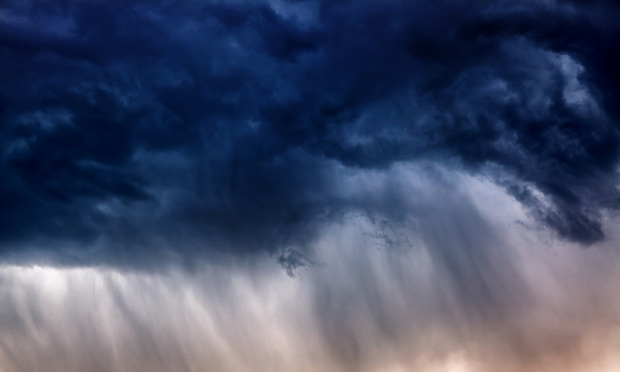When you’re the most prominent and powerful plaintiffs’ attorney in the land, winning hundreds of billions of dollars for your clients, you definitely qualify as a legend—or rather, a bogeyman who undoubtedly has haunted the dreams of many a carrier executive.
Richard “Dickie” Scruggs may now be serving time at a federal prison camp in Alabama for his role in bribing two Mississippi district court judges, but prior to his fall from grace he dominated courtrooms for decades, playing a significant role in not one, not two but three of the most important and costly civil disputes of all time: those revolving around assigning liabilities for tobacco, asbestos and Hurricane Katrina.
Indeed, following Katrina, Scruggs became a symbol of an affirmation of policy language—specifically a certain tongue-tying clause in homeowners’ policies used by plaintiffs’ attorneys to fuel misinterpretations and villainize insurers. Through his crusade against insurance companies, Scruggs ironically ended up cementing the very policy language he attempted to use as a weapon against insurers.
Scruggs attacked the insurance industry with hundreds of lawsuits following the hurricane, alleging insurers underpaid and used the “anti-concurrent causation clause” to inappropriately deny payments to policyholders for wind damage.
No company was targeted more than State Farm. Flanked by former independent claims adjusters Kerri and Cori Rigsby, Scruggs asserted he had proof within thousands of documents that State Farm had altered claims reports.
These “whistleblowers,” he said, stole State Farm documents that allegedly proved the insurer fraudulently reduced wind losses by claiming damage was from flooding—a peril not covered by a standard homeowners’ policy—and fraudulently shifted losses to the National Flood Insurance Program.
Scruggs, himself a victim of Katrina, launched a “populist, political fight—not a legal fight”—against insurers, says Alan Lange, who covered the lawsuits on his blog Y’all Politics and penned the book “Kings of Tort” about Scruggs’ subsequent downfall.
“It was a professionally run public-relations effort,” says Lange of Scruggs’ tactics—and he had powerful allies. His brother-in-law is Trent Lott, then a U.S. senator. And Mississippi’s state attorney general was threatening the criminal prosecution of insurance executives.
“I don’t think he ever meant to see the inside of the courtroom,” Lange says of Scruggs. “He just expected [insurers] to throw up their hands and say, ‘Make it stop.’”
Insurers were losing battles in lower courts on whether storm surge was part of the flood exclusion and/or the anti-concurrent causation clause in homeowners’ policies. Judges called policy language ambiguous and unenforceable.
Outcomes were fueled by misinterpretation, jury pools of storm victims and the difficult task of assessing damages to “slab cases”—homes that were battered so hard by Mother Nature that only a concrete slab remained.
There were some cases in which insurers deemed it a better option to settle than fight a prolonged legal battle; Scruggs made millions from those cases, although that payoff was likely not as big as he’d hoped, says attorney David Rossmiller of Dunn Carney Allen Higgins & Tongue LLP in Portland, Ore.
Rossmiller says Scruggs made a few key miscalculations regarding the willingness of certain insurers—especially State Farm—to fight to defend the language in their policies.
“Insurers were very vested in upholding the language and conquering misconceptions because it affected their profitability,” says Rossmiller, whose papers published on the anti-concurrent causation clause were often cited by judges as insurers took their fight to higher courts.
Making a long, convoluted story of litigious motions and appeals short, in the end insurers came out on top in the question of wind vs. water.
“It came down to the words on paper,” says Rossmiller. Regardless of the policy language, the clause, he adds, “can only be manipulated so far.”
When the media, political and public-relations storms against insurers dissipated, he adds, policies still contained language driven by court precedent and created for judges, not amateur readers of litigation.
“Just because it may sound confusing—or the language is put together poorly in some cases—doesn’t make it ambiguous,” says Rossmiller. “It’s still all right there.”
Courts determined Katrina did not involve concurrent or sequential damage. Each force acted separately and caused separate damage. Insurers are responsible for wind damage; they are not liable to pay for water damage.
Scruggs, who began his legal career defending insurance companies, is scheduled to be released, stripped of his law license, in 2015—about the time that some observers predict nanotechnology will become “the next asbestos.”
Want to continue reading?
Become a Free PropertyCasualty360 Digital Reader
Your access to unlimited PropertyCasualty360 content isn’t changing.
Once you are an ALM digital member, you’ll receive:
- Breaking insurance news and analysis, on-site and via our newsletters and custom alerts
- Weekly Insurance Speak podcast featuring exclusive interviews with industry leaders
- Educational webcasts, white papers, and ebooks from industry thought leaders
- Critical converage of the employee benefits and financial advisory markets on our other ALM sites, BenefitsPRO and ThinkAdvisor
Already have an account? Sign In Now
© 2024 ALM Global, LLC, All Rights Reserved. Request academic re-use from www.copyright.com. All other uses, submit a request to [email protected]. For more information visit Asset & Logo Licensing.








